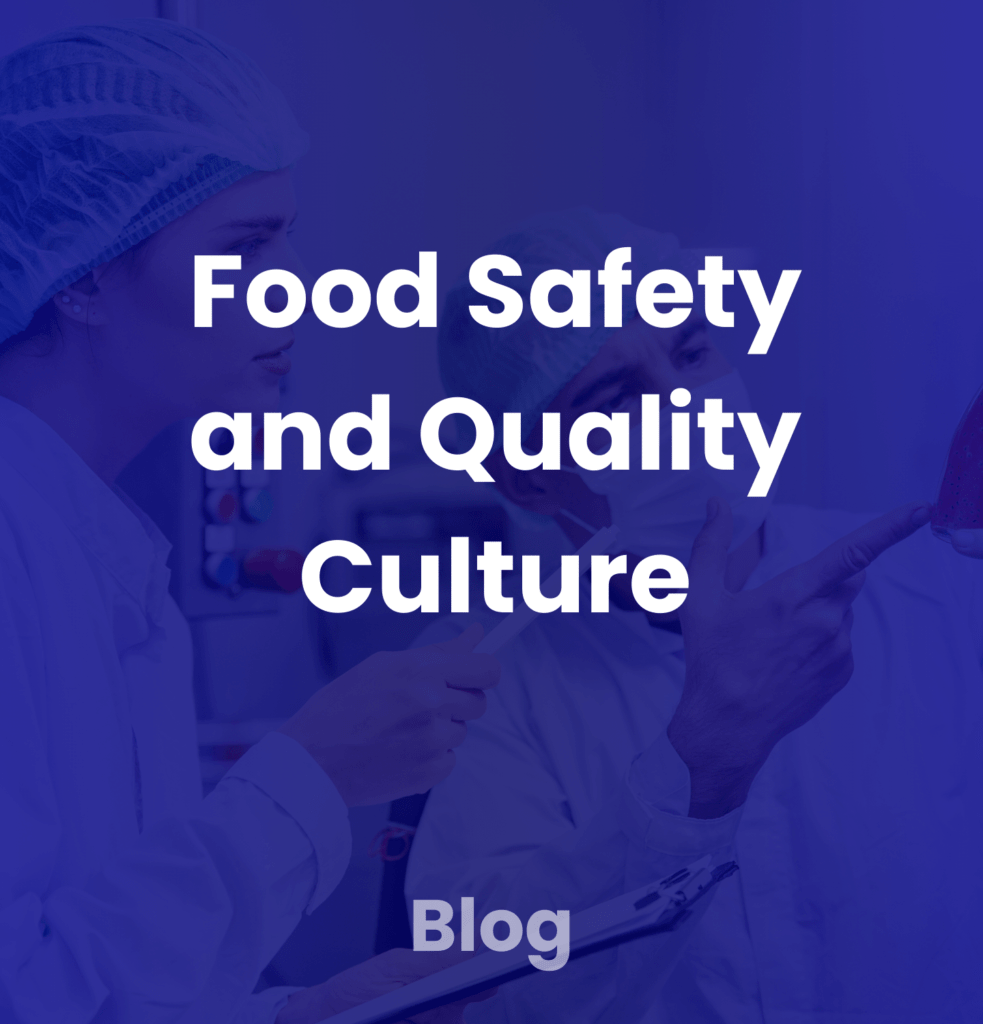
Sector-Specific Information
The Food Industry Hub knowledge centre delivers a wide range of sector-specific information for food industry professionals.
The below is one topic from our knowledge centre. You can return to all topics by clicking here.
Additives
Definition
Food additives are substances that are intentionally incorporated into food products to achieve specific technological purposes, such as enhancing taste, texture, appearance, nutritional content, or shelf life. These substances can be either natural or synthetic, and their use is tightly regulated by food safety authorities to ensure they are safe for human consumption. Additives are typically classified according to their function in the food manufacturing process, and in many regions, they are assigned specific identification codes, such as the “E number” system used in the European Union (EU).
In the UK and EU, the use of additives is governed by rigorous regulations, with the European Food Safety Authority (EFSA) providing scientific assessments on their safety. The use of an additive in food is permitted only once it has undergone extensive safety evaluation and been assigned an E number, indicating it has been approved for use in specific quantities for specific purposes.
Categories of Additives
Additives serve various functions in food products. Broad categories include:
- Preservatives: These prevent the growth of microorganisms, thereby extending the shelf life of food products. Common preservatives include sodium benzoate, sorbic acid, and nitrites.
- Flavour Enhancers: These enhance or modify the natural taste of foods. This category includes substances such as MSG.
- Colorants: These are used to improve the visual appeal of food products. Examples include carotenoids, which impart a yellow-orange hue to cheese, and synthetic dyes such as tartrazine, used in confectionery.
- Emulsifiers: These agents enable the mixing of ingredients that would otherwise separate, such as oil and water. Lecithin is a commonly used emulsifier in products like margarine and mayonnaise.
- Stabilisers: Used to maintain the texture and structure of food products over time, stabilisers prevent undesirable physical changes such as crystallisation in frozen desserts.
- Nutritional Supplements: Additives can also be used to fortify foods, such as adding vitamins and minerals to breakfast cereals, ensuring nutritional adequacy.
Each additive is assigned a specific function within the product, and their use is regulated to ensure they do not exceed safe levels. The identification of these substances often includes numerical codes, such as the E-number system, which helps professionals and regulators quickly identify additives in food products.
Practical Application
The role of additives in food manufacturing is central to ensuring product consistency, quality, and safety, while also meeting consumer expectations for taste and visual appeal. Their application spans across a range of functions:
- Preservation and Shelf Life Extension: Additives like sodium nitrite in processed meats or sorbic acid in baked goods play a critical role in inhibiting microbial growth, ensuring foods remain safe to consume over extended periods.
- Textural Control and Emulsion Stability: Emulsifiers like lecithin are integral in products such as salad dressings, margarine, and ice creams, ensuring the smooth consistency and preventing separation of ingredients.
- Improved Sensory Properties: Additives such as MSG or natural flavour enhancers intensify the taste profiles of a wide range of products. This ensures a uniform product experience for consumers, even when ingredient variations may occur.
- Colour and Appeal: The use of colourants like carmine or synthetic colours makes products more visually appealing. For example, the addition of annatto in cheeses imparts a rich yellow colour, which is often associated with higher quality.
- Nutritional Fortification: Additives such as vitamins and minerals are added to products like dairy, breakfast cereals, and beverages to improve their nutritional value. For instance, vitamin D is commonly added to milk to prevent deficiencies.
The application of additives is often subject to industry best practices, with formulations carefully designed to ensure both product performance and compliance with legal limits.
Regulatory Frameworks and Labelling
Additives are regulated under strict safety guidelines to protect public health. In the UK and EU, the use of food additives is governed by Regulation (EC) No 1333/2008 on food additives. This regulation stipulates which substances can be used in food products, their acceptable usage levels, and labelling requirements. Additionally, additives must meet specific criteria for safety assessments, conducted by bodies like EFSA.
The EFSA evaluates the safety of food additives based on a variety of factors, including the acceptable daily intake (ADI), which defines the maximum amount of a substance considered safe for consumption over a lifetime without adverse effects. This data helps ensure that additives do not pose a health risk when consumed at recommended levels.
Labelling: In accordance with Regulation (EU) No 1169/2011 on food information to consumers, foods containing additives must be clearly labelled. The use of E numbers is mandatory for certain additives, along with the type of additive, such as “colouring agent” or “preservative.” In some cases, the specific name of the additive must also be provided. Labelling requirements help ensure transparency, allowing consumers to make informed choices regarding the additives in their food. The rise of the “clean label” trend, where consumers demand simpler, natural ingredient lists, is influencing food manufacturers to minimise the use of synthetic additives, favouring natural alternatives where possible.
Maximum Use Levels and Practical Considerations
The maximum allowable levels for additives are set by regulatory bodies to ensure consumer safety. For example, preservatives such as benzoates and sorbates have a maximum allowable concentration in certain foods. For instance, sodium benzoate is limited to 0.1% in soft drinks in the EU. These limits are determined based on extensive scientific research and risk assessments, aiming to balance product stability with safety.
Food manufacturers must also account for local regulations when exporting products. While the EU and UK share many common standards, some countries may impose stricter limits or prohibit certain additives altogether. For example, the use of certain artificial colourings in food is more restricted in the EU than in some other regions, where the use of synthetic colourants such as tartrazine is still more common.
Challenges and Emerging Trends
The food industry faces ongoing challenges related to additives. The rising demand for natural and organic products has prompted food manufacturers to seek alternatives to synthetic additives. For instance, many are exploring natural emulsifiers, antioxidants, and preservatives derived from plant sources or fermentation processes. As plant-based foods gain popularity, additives like stabilisers and preservatives sourced from algae or plant extracts are being developed as alternatives to their synthetic counterparts.
The “clean label” movement has also spurred changes in additive use. Consumers increasingly seek transparency and simplicity in food ingredients, and manufacturers are under pressure to provide products with fewer artificial additives. However, these changes come with challenges. For instance, natural preservatives may be less effective than their synthetic counterparts, potentially compromising product shelf life.
The Future of Food Additives
Advancements in food science and biotechnology are paving the way for the development of multifunctional additives. These new ingredients promise to streamline formulations by combining the roles of several additives in a single substance. For example, a new generation of emulsifiers may also serve as antioxidants or preservatives, reducing the need for multiple additives in a formulation. The industry is also exploring new delivery systems that enable additives to be released at the optimal time in the product lifecycle, further improving their effectiveness.
Greater transparency and communication regarding the role of additives in food production are essential for enhancing consumer trust. The ongoing development of food technology and regulatory frameworks will likely drive further innovation in additive use, making food manufacturing more efficient, sustainable, and aligned with consumer expectations.
Conclusion
Additives play a critical role in food manufacturing, contributing to product stability, sensory properties, and nutritional content. Their use is subject to rigorous regulatory oversight, ensuring that they are safe for consumption at prescribed levels. The evolving regulatory landscape, coupled with consumer demand for transparency and natural products, is reshaping the way additives are used in food production. By understanding the complexities of food additives, professionals in the food industry can make informed decisions that balance innovation with regulatory compliance and consumer demands.
Food Industry Hub Management Systems can significantly boost the effectiveness of your food safety and quality management system, leading to improved confidence and elevated quality assurance throughout your operations.
About The Food Industry Hub Knowledge Centre
The Food Industry Hub knowledge centre delivers informative content on a variety of topics pertinent to the food manufacturing industry.
You can return to all topics by clicking here.
We regularly produce new content for food industry professionals, and the Food Industry Hub Mail Service is the best way to stay up to date with the latest additions.
Signup today to be added to the Food Industry Hub mailing list.










